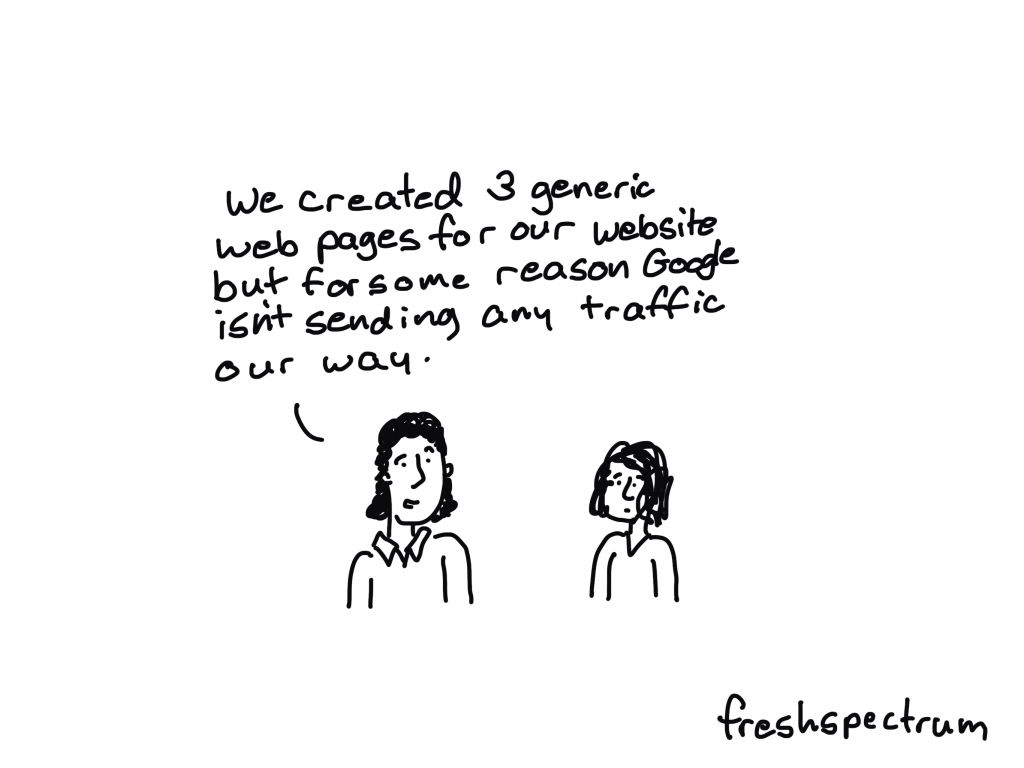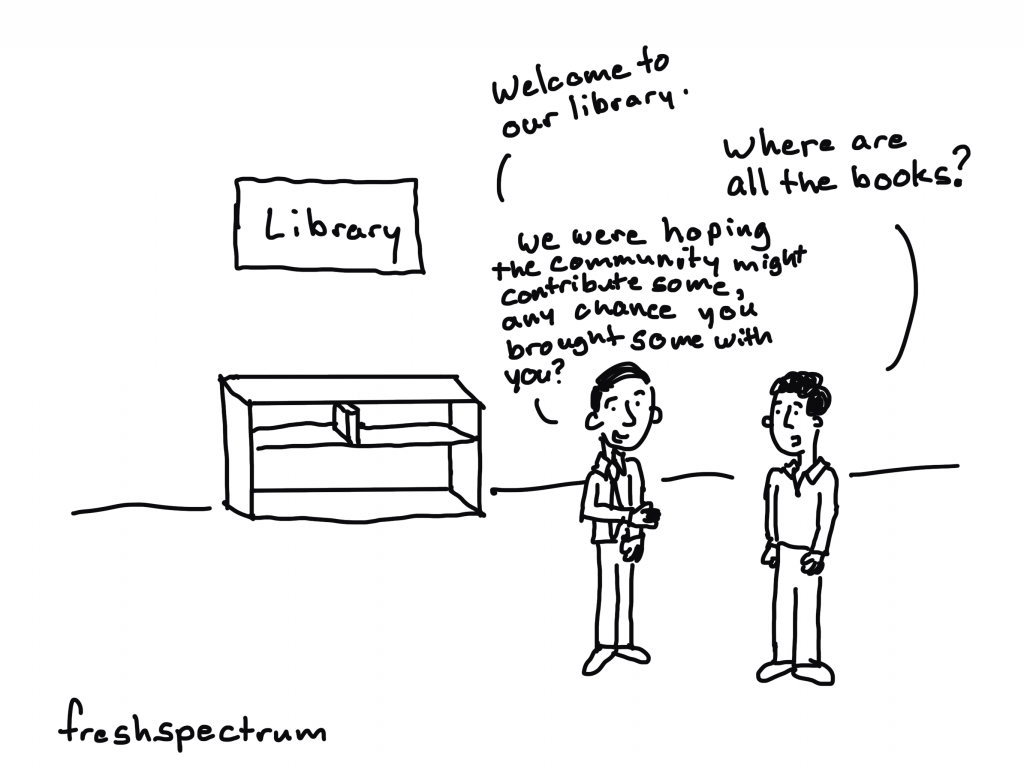This is an Eval Central archive copy, find the original at freshspectrum.com.
Have you ever visited a park that lacked any type of attraction? So no playground, trails, pond, shelter, picnic table, or anything else that make a visit worthwhile?
Boring right?
Unless it’s right across the street from your house with just enough room to toss a ball back and forth, you’re probably not going back to that park anytime soon. Don’t get me wrong, there are plenty of reasons to have open spaces, but if your community’s goal was to create something people cherish and love, it’s probably not enough.

The same is true is for the web. There are countless attraction-less websites filling up the interweb. Websites with just enough information to tell you who works at an organization and how you might be able to get in touch.
Essentially, digital brochures.

How to assess content deficiency
Usually you can tell pretty quickly if a website is just a digital brochure. But sometimes websites are structured in a way that looks simple and streamlined, but actually pack in a lot of content.
So the easiest way I’ve found to assess whether a website is content deficient is through a quick Google search. All you have to do is open up google and type “site:” before the web address. This will give you the pages Google has indexed for the particular hyperlink you put behind “site:”

Giving the numbers context.
More is not always better. But just like you wouldn’t frequent a library without books, you’ll likely not frequent a website without pages.
Understanding how much content your website should have is always an it depends kind of thing. But one thing I like to do is to look at a website in context to other websites that serve similar audiences.
For example, let’s look at EvalYouth. Their homepage is currently off of the main evalpartners page.

EvalYouth in partnership with the UNFPA Evaluation Office and Global Parliamentarians Forum for Evaluation recently spun off a new website that appears to aspire for more growth. There is an advocacy goal, and the blog and resource library show the intention for growth.

So let’s look at some more established resource sites. What would it look like to really build out a stable library of content?



What does it mean?
Page counts are not everything. But I will say this.
- Better Evaluation receives far more web traffic than the American Evaluation Association.
- The American Evaluation Association receives far more web traffic than the European Evaluation Society.
- The European Evaluation Society receives far more web traffic than the Eval4Action website.
Anything can change, and we all start from somewhere. But building out a content library takes time and energy.
Developing a Content Strategy
Content doesn’t just develop itself. As much as we would like that to happen.
A good curator and team of creators, following a well-formed content strategy can build out a significant content library. Ask yourself why you have the site in the first place, and figure out how to build the content necessary to reach that goal.
And remember, just because your website looks the part, doesn’t mean it is actually achieving your goals.